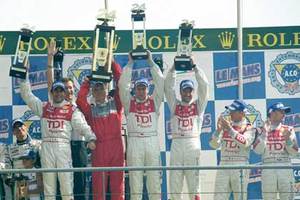
This past weekend a brand came alive. The brand had already existed, and oodles of money had been spent to build it, but it wasn’t a living, breathing thing yet. In other words, it was still a brand built by marketers, not a brand felt and understood by people out in the world.
The brand I’m talking about in particular is Audi’s TDI, which represents the state of the art in diesel-based internal conbustion. In the guise of Audi’s wicked new R10 race car, TDI not only won the 24 Hours of Le Mans (possibly the toughest race in the world), but also broke all the records, going farther than any car had gone before, while getting better gas mileage to boot.
Last week TDI was something which a person with a technical background like me would have explained to you in terms of technology (high-pressure fuel injection, clever turbos) and/or performance metrics, such as torque and consumption. And I might have convinced you. But could you have told a friend? Would you have remembered the critical bits? Would it all have meant something?
Now all I have to say is "TDI won Le Mans". TDI is now a real story, and a romantic one at that, and from now on diesel isn’t the smelly, smokey old Mercedes station wagon blocking the left lane but a speeding silver arrow whispering down the Mulsanne. TDI. Your brand is what you do in the world, not what you say you do.





